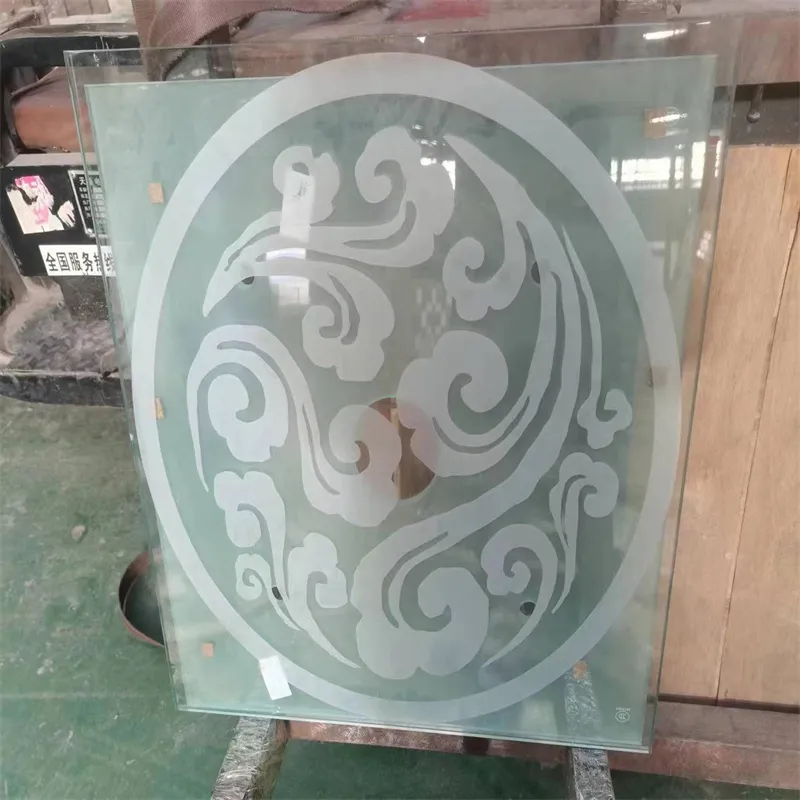Nov . 06, 2024 23:52 Back to list
Benefits of Low E Tempered Glass for Energy Efficiency and Durability in Modern Architecture
Understanding Low-E Tempered Glass Benefits and Applications
Low-E tempered glass has gained recognition in both commercial and residential construction due to its unique properties, offering energy efficiency, durability, and aesthetic appeal. In this article, we will explore what Low-E tempered glass is, its benefits, and various applications to highlight its versatility in modern architecture.
What is Low-E Tempered Glass?
Low-E tempered glass, or low-emissivity tempered glass, is a type of glass that has been treated to reflect infrared light while allowing visible light to pass through. The low-E refers to a microscopic coating applied to the glass that minimizes the amount of heat that can transfer through it. This coating is essential for enhancing the energy efficiency of buildings, leading to substantial savings on heating and cooling costs.
Tempering is a heat treatment process that strengthens glass by inducing compressive stresses. This process makes the glass less likely to break and, if broken, causes it to shatter into small, blunt pieces rather than sharp shards, reducing the risk of injury. The combination of low-emissivity technology and tempering creates a product that offers significant advantages over traditional glass.
Benefits of Low-E Tempered Glass
1. Energy Efficiency One of the primary benefits of Low-E tempered glass is its ability to improve energy efficiency. By reducing thermal transfer, it helps maintain comfortable indoor temperatures regardless of outside weather conditions. Buildings utilizing Low-E glass require less energy for heating in winter and cooling in summer, leading to lower utility bills.
2. UV Protection Low-E tempered glass can block up to 99% of harmful ultraviolet (UV) rays while allowing visible light to enter. This property helps protect furniture, artwork, and flooring from fading, ensuring that interiors remain vibrant and maintained over time.
3. Increased Comfort By improving insulation, Low-E glass contributes to a more stable indoor climate. This means fewer cold drafts in the winter and reduced heat buildup in the summer, enhancing the overall comfort for occupants.
4. Safety and Security The tempering process not only strengthens the glass but also increases safety in buildings. Low-E tempered glass is more resistant to impact and thermal stress, making it an ideal choice for locations prone to severe weather conditions. Moreover, it adds a layer of security, as tempered glass is harder to break compared to standard glass.
low e tempered glass

5. Environmental Impact Using Low-E tempered glass aligns with sustainable building practices. By reducing energy consumption, it helps decrease a building's carbon footprint. Many builders and architects are incorporating this glass into green building designs to meet energy codes and certifications.
Applications of Low-E Tempered Glass
Low-E tempered glass is versatile and can be utilized in a variety of applications
2. Curtain Walls In high-rise buildings, Low-E tempered glass is often used for curtain wall systems that provide thermal insulation while allowing for impressive architectural designs.
3. Glass Doors Low-E tempered glass can also be used in doors, offering the same benefits in terms of energy efficiency and security while adding aesthetic value to entrances.
4. Skylights For building designs that include skylights, Low-E tempered glass is an excellent choice. It allows natural light to enter while effectively minimizing heat gain from the sun.
5. Shower Enclosures Beyond architecture, Low-E tempered glass can be used in bathroom designs for shower enclosures. Its durability and safety features make it suitable for high-moisture environments.
Conclusion
Low-E tempered glass represents a significant advancement in glass technology, combining safety, energy efficiency, and aesthetic appeal. Its ability to reduce energy costs, protect interiors from UV damage, and enhance occupant comfort makes it a popular choice for modern buildings. As sustainability becomes paramount across industries, Low-E tempered glass stands as a leading solution for architects and builders aiming to create functional, safe, and energy-efficient structures. Whether in homes or commercial spaces, its application continues to grow, shaping the future of architectural design and sustainability.
-
Safety and Style with Premium Laminated Glass Solutions
NewsJun.24,2025
-
Reinvents Security with Premium Wired Glass
NewsJun.24,2025
-
Premium Float Glass Line for Modern Architecture
NewsJun.24,2025
-
Low Emissivity Glass for Energy-Efficient Architecture
NewsJun.24,2025
-
High-Performance Insulated Glass Solutions for Modern Architecture
NewsJun.24,2025
-
Elevates Interior Style with Premium Silver Mirror
NewsJun.24,2025
Related PRODUCTS














